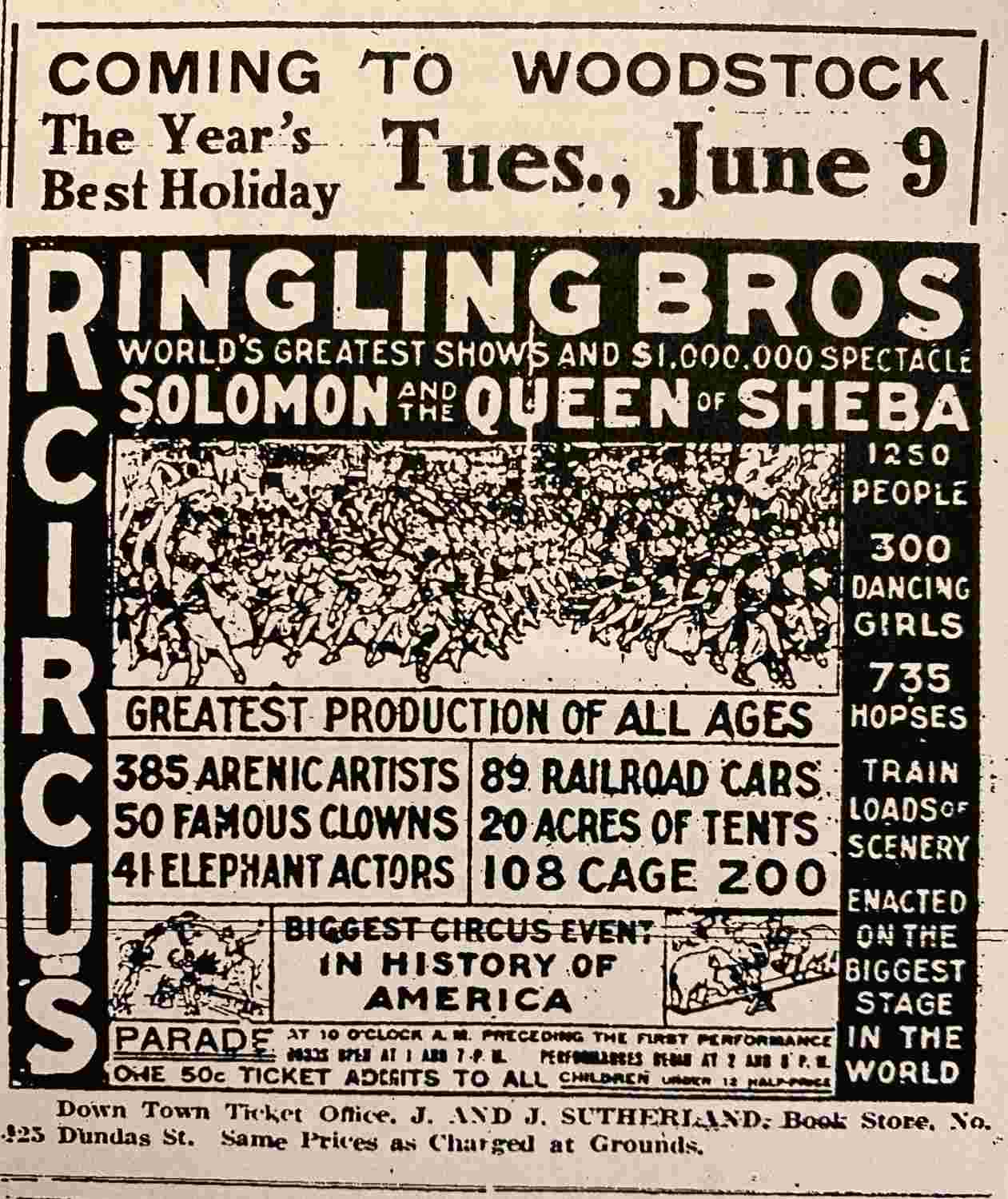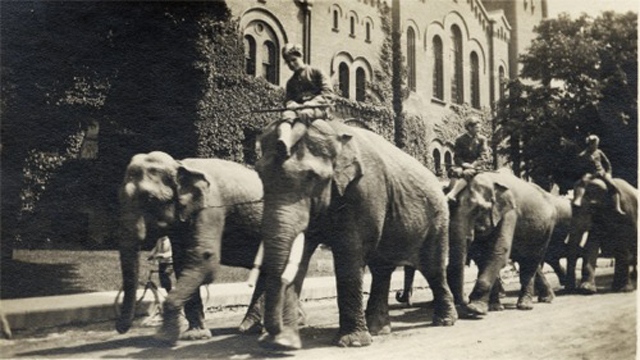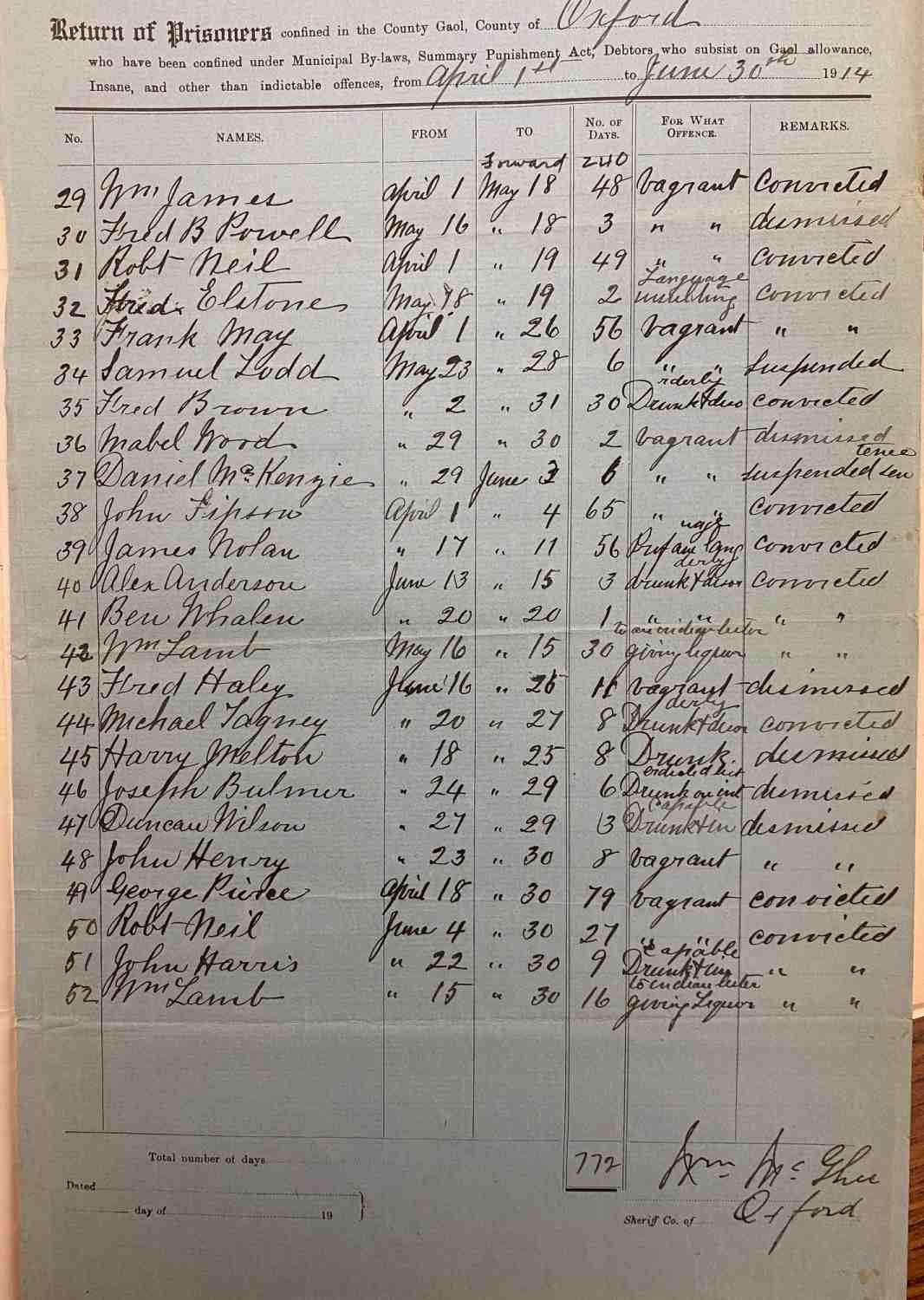Ringling Bros. Circus Visits Woodstock
Ringling Bros. Circus Visits Woodstock
Come one, come all! The Ringling Brothers Circus puts on a spectacle in Woodstock, Ontario!
By Liz Dommasch, Archivist
The sons of a German immigrant, the Ringling Bros. founded their circus in Baraboo, Wisconsin in 1884. Soon after, the circus started traveling by train, allowing the show to consistently expand and eventually becoming a viable competitor to Barnum and Bailey’s Circus. By 1887, Ringling Circus changed its official title to the “Ringling Bros. United Monster Shows, Great Double Circus, Royal European Menagerie, Museum, Caravan, and Congress of Trained Animals”.
The Ringling Bros. didn’t limit their shows to the United States, and like many circuses of the time, they travelled to Canada to perform. In 1901 they arrived in Woodstock with a circus parade that was said to be two miles long and included hundreds of richly-adorned horses and riders, dens and cages of rare wild animals, acrobats, elephants, and other wonders. Once they arrived at the exhibition site, they performed two public performances at 2 p.m. and 8 p.m. Over the next decade, the circus would make numerous stops in the city with bigger and better attractions. On June 9, 1914, the circus once again returned to Woodstock with eighty-nine rail cars filled with clowns, elephant actors, dancing girls, and other arena-type artists. They also returned with a prodigious stage spectacle known as “Solomon and the Queen of Sheba”.

Ringling Bros. Circus travelling past Knox Church, Woodstock – 1913
During the late 19th and early 20th centuries, historical and biblical spectacles were performed at circuses across North America, often to appease the clergy that considered such traveling shows to be immoral. By embracing a biblical theme, circuses were able to capitalize on positive church values. “Solomon and the Queen of Sheba” was presented in a series of dramatic pantomimic pictures on a stage occupying nearly one entire side of the main tent. It also included a cast of more than 1,250 characters, a ballet of 300 dancing girls, an orchestra of 90 musicians, as well as 400 trained singers.
The Woodstock Sentinel-Review reported that crowds packed Dundas Street between Wellington Street and Vansittart Street waiting for the parade that traversed Dundas Street shortly after 11 o’clock. It was said to include a large herd of elephants and camels, and a Union Jack that was “conspicuously displayed” as “an act of international courtesy”. The Sentinel-Review also noted on its front page that Robert “Bob” Neil, a prisoner at the jail, was out on the street that morning working (supposedly under the charge of an attendant) and was found to be missing after the circus parade had passed. Neil spent several years including most of 1913, 1914, and 1915 within the jail walls for drunkenness and vagrancy. An alarm was sounded and he was eventually located two hours later wandering around on the street and was brought back. When asked why he disappeared, he simply replied he only went off to see the circus parade.
Little is known of the fate of Robert Neil, though the same can’t be said for the famous circus. In 1919 the Ringling Circus and Barnum and Bailey’s Circus merged due to declining audiences and employees being drafted for WWI. Known as the Ringling Bros. and Barnum & Baily Circus, it would remain in operation until May 21, 2017, when it would close the big top curtain once last time, following weakening attendance and high operating costs.
Image credits:
Ringling Bros. advertisement: Woodstock Sentinel-Review – 4 June 1914.
Return of Prisoners – April 1st to June 30th, 1914: COA RG2 Series 6, Subseries A, Box 3
Ringling Bros. Circus traveling past Knox Church, Woodstock – 1913. Courtesy of Woodstock Museum NHS #1988.33.41.
